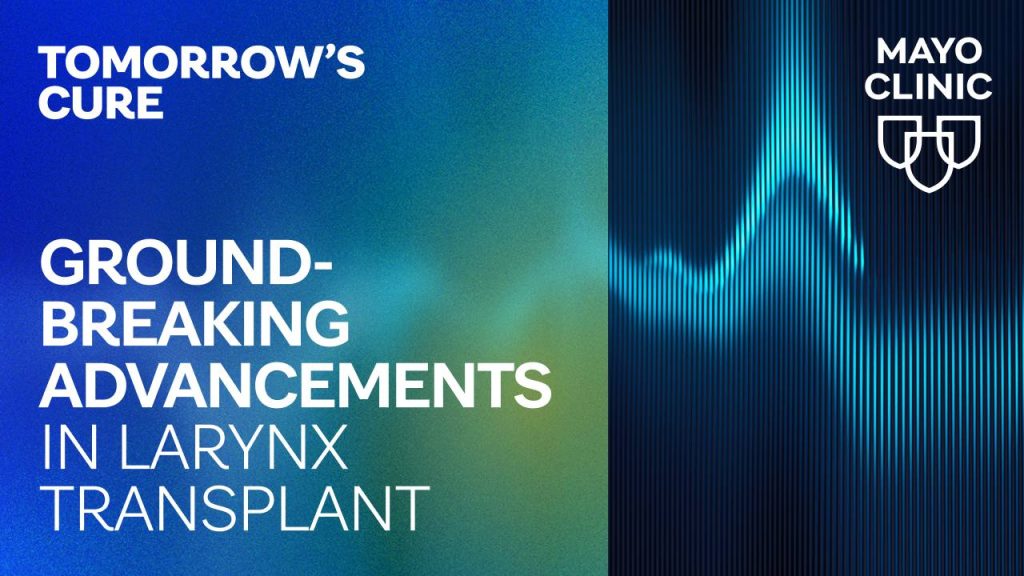-
Tomorrow’s Cure: Groundbreaking advancements in larynx transplant

Researchers are pioneering innovative ways to restore voice to those who have lost it, leveraging advancements in transplant surgery and 3D printing. Discover these groundbreaking developments in the latest episode of Tomorrow's Cure.
Dr. David Lott, associate director of Mayo Clinic's Center for Regenerative Biotherapeutics and chair of the Department of Otolaryngology, joins his mentor, Dr. Marshall Strome, an otolaryngologist, professor, and chair emeritus of the Cleveland Clinic Head and Neck Institute, to share their insights as leaders at the forefront of this transformative research.
On Feb. 29, 2024, Dr. Lott, joined by Dr. Strome, led a multidisciplinary team in performing a groundbreaking larynx transplant for Marty Kedian, a Mayo Clinic patient. The procedure at Mayo Clinic in Arizona was the third known larynx transplant in the U.S. and first for a patient with active cancer as part of a clinical trial. The surgery offers new hope to individuals who have experienced severe laryngeal dysfunction or complete larynx loss.
Dr. Lott emphasizes the critical role of the larynx in daily life. "It allows us to swallow, eat, drink — all the things that we do on a day-to-day basis — breathe, get air into our lungs, and, perhaps most importantly, allows us to communicate and share a voice," he says.
The larynx transplant surgery is a pivotal advancement in making this rare procedure a scientifically validated, safe and effective option for patients.
Marty stresses the importance of the surgery, and he explains why he chose to undergo the procedure. "My reason of pushing this type of surgery, a total transplant, is because I know how it is not to have my voice and then to get it back. Not having a voice hurts. Having it back, life is beautiful," he says.
"The larynx has different meanings to different people," says Dr. Strome. "But it's clearly, very clearly, an organ that when you don't have it, alters your life in a way that most people would not choose."
Researchers are continually advancing innovative solutions to personalize transplants and implants, customizing them to meet the unique needs of each patient. The goal is to address the shortage of donor organs and reduce the reliance on lifelong anti-rejection medications. Among these advancements is the use of 3D bioprinting, which offers expanded options for both patients and surgeons, transforming the future of transplantation.
To learn more about these transformative advancements, listen to the latest episode of Tomorrow's Cure. The podcast is available on all audio platforms, including Apple Podcasts, Spotify and Amazon Music. Episodes also can be viewed on Mayo Clinic's YouTube channel.
Related Articles:
Paving the way for future larynx transplants through regenerative science
Research prepares for Mayo's first larynx transplant







